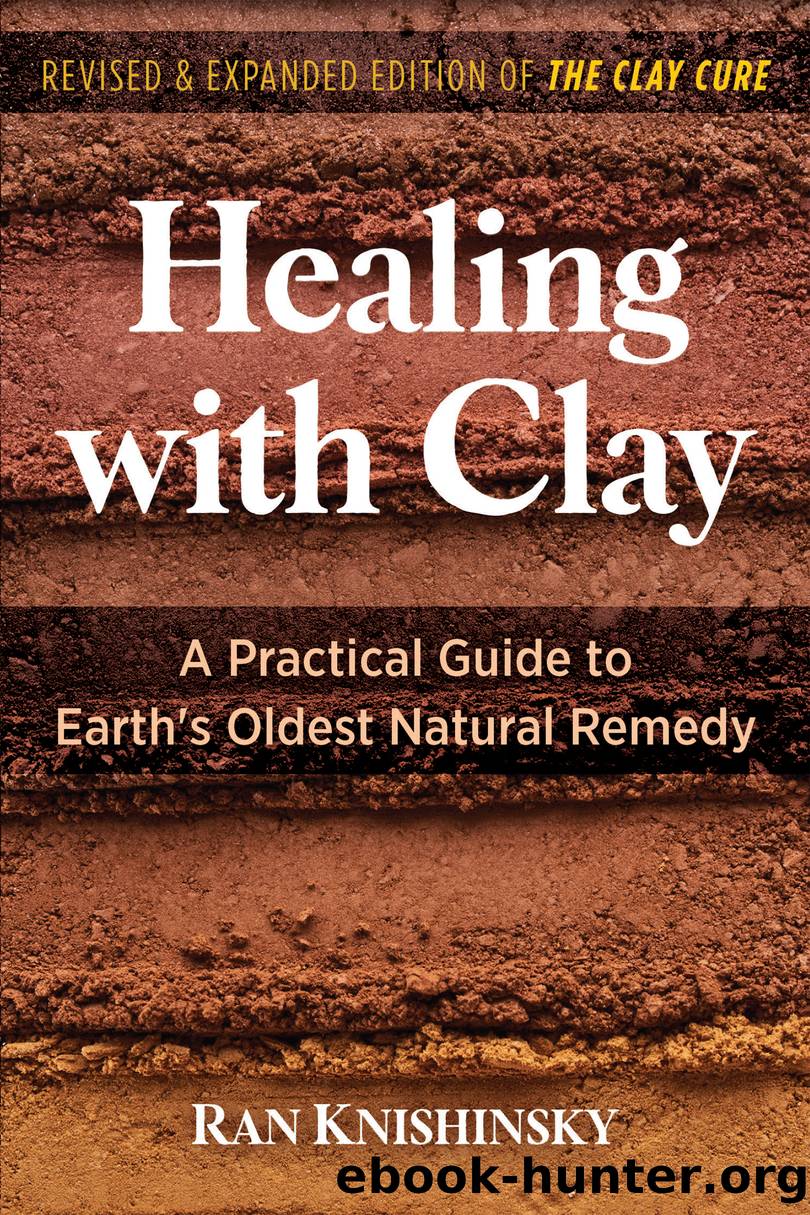Healing With Clay by Ran Knishinsky

Author:Ran Knishinsky
Language: eng
Format: epub
Tags: HOLISTIC HEALTH
Publisher: Inner Traditions/Bear & Company
Published: 2021-12-14T00:00:00+00:00
WHAT ARE MYCOTOXINS AND AFLATOXINS?
We have just been introduced to mycotoxins, and theyâre important enough to merit some more detailed discussion. They are toxic secondary metabolites produced by fungus and have been the subject of some of the clinical studies conducted with clay. Itâs a somewhat complicated sounding name for a group of toxins, but basically they can be called fungal poisons. First discovered in 1962, these little guys can cause a wide range of health concerns in humans who are exposed to small amounts over an extended period of time. They can be lethal if taken in large quantities over a short period of time. Believe it or not, grains can be a source of mycotoxins.
âGrains are sources of carbohydrates, or sugars, and as such, they risk contamination by certain fungi. These fungi produce secondary metabolites, or mycotoxins,â according to David Straus, a professor of microbiology and immunology at Texas Tech University Health Sciences Center. 6
In fact, if you consume grains, or grain-fed animal products, there is an excellent chance you are already being exposedâmold infestation and mycotoxin contamination affects as much as one-quarter of the global food and feed supply. The American Food and Agriculture Organization estimates that 25 percent of the food crops in the world are affected by mycotoxins.7 Do I have your attention yet?
Aflatoxins (pronounced a-fluh-tok-sins), according to the World Health Organization, are among the most poisonous mycotoxins and are produced by certain molds (Aspergillus flavus and Aspergillus parasiticus) that grow in soil, decaying vegetation, hay, and grains. Aflatoxins have also been shown to be genotoxic, meaning they can damage DNA and cause cancer in animal species. According to the Food and Drug Administration (FDA) aflatoxins are potent toxins and known carcinogens, so their levels in food should be limited to the lowest practical level.
Many of the foods we eat on a daily basis contain mycotoxins (which include aflatoxins). There is not really any way to avoid this, and itâs quite unrealistic to think that one either can or should. Luckily for persons living in the United States, the food supply is highly regulated and typically presents less exposure than developing regions of the world. However, there is potential for increased exposure in individuals consuming a large amount of foods that are prone to contamination, such as corn and corn-based products.
It is estimated that each fungus on Earth produces up to three different mycotoxins. The mycotoxins known to date number in the thousands. Following is a list of potential sources of mycotoxins we consume every day:
Download
This site does not store any files on its server. We only index and link to content provided by other sites. Please contact the content providers to delete copyright contents if any and email us, we'll remove relevant links or contents immediately.
Spare by Prince Harry The Duke of Sussex(5074)
Machine Learning at Scale with H2O by Gregory Keys | David Whiting(4190)
Fairy Tale by Stephen King(3221)
Will by Will Smith(2794)
Hooked: A Dark, Contemporary Romance (Never After Series) by Emily McIntire(2502)
The Bullet Journal Method by Ryder Carroll(2487)
Rationality by Steven Pinker(2291)
Can't Hurt Me: Master Your Mind and Defy the Odds - Clean Edition by David Goggins(2229)
It Starts With Us (It Ends with Us #2) by Colleen Hoover(2202)
Friends, Lovers, and the Big Terrible Thing by Matthew Perry(2123)
The Becoming by Nora Roberts(2089)
Love on the Brain by Ali Hazelwood(1965)
HBR's 10 Must Reads 2022 by Harvard Business Review(1778)
The Strength In Our Scars by Bianca Sparacino(1777)
A Short History of War by Jeremy Black(1763)
Leviathan Falls (The Expanse Book 9) by James S. A. Corey(1651)
515945210 by Unknown(1601)
A Game of Thrones (The Illustrated Edition) by George R. R. Martin(1591)
Bewilderment by Richard Powers(1540)
